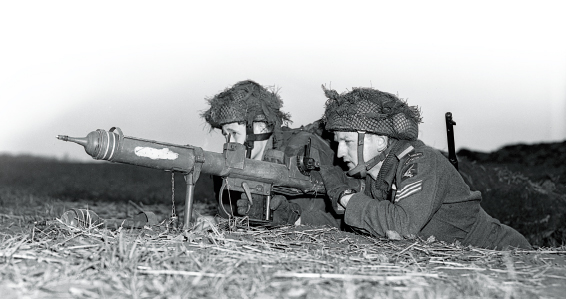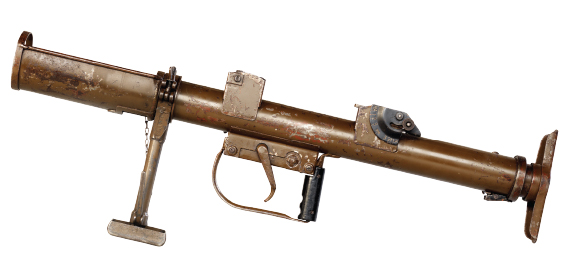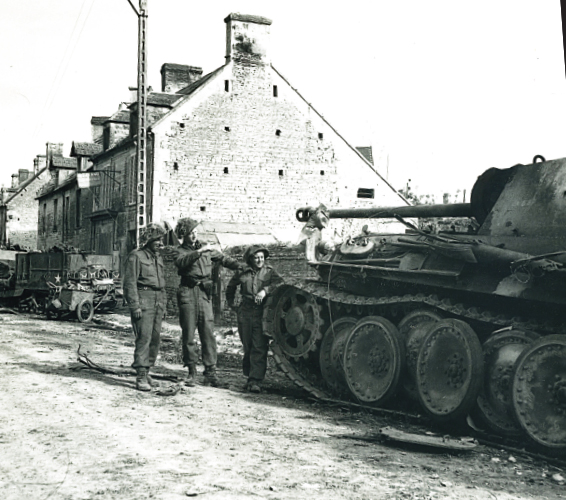
Not all Panzer battles in the Second World War featured tanks duking it out or dodging artillery fire. Many of the big machines were destroyed by infantry. Ernest (Smokey) Smith’s Victoria Cross action at the Savio River in northern Italy in October 1944 began with him disabling a Panther from nine metres away with a Projector, Infantry, Anti-Tank (PIAT) weapon.

Canadians were introduced to PIATs in Sicily in 1943 and used them to great effect in Normandy after D-Day. PIATs took out seven per cent of German tanks destroyed by British troops in Normandy (one per cent more than rocket-firing aircraft).
Joseph Lapointe of the Regina Rifles used a PIAT to destroy a tank right outside battalion headquarters in Bretteville-l’Orgueilleuse, France, on the night of June 8-9, 1944. In nearby action, Sergeant Major Basil Currie “opened fire, firing as fast as I could slap the bombs on. He bounced bombs off both these tanks and with our last bomb, he crippled the nearest tank,” reported Rifleman Sergeant Irwin Wood, quoted in Marc Milner’s Stopping the Panzers: The Untold Story of D-Day.
As tank armour grew thicker, anti-tank guns grew bigger and less practical to move around. A breakthrough in ammunition allowed for the development of a weapon that was powerful enough to pierce armour but could be carried by one soldier.

The Americans used bazookas (recoilless anti-tank rocket launchers), the Germans panzerschrecks (armoured fright) and panzerfausts (armoured fist). The less romantically named PIAT was a simple tube containing an enormous spring, with a tray at front to accommodate a hollow cone-shaped charge that detonated on impact, focusing the explosive force to a tiny point capable of penetrating a tank’s 75-millimetre armour plating. “And probably set it on fire, which it did most of the time,” said Corporal Colin Francis Fleiger of Miramichi, N.B., in a Memory Project interview.
The PIAT took two soldiers to operate; one fed the ammunition while the other stood to cock the weapon, then laid on the ground, pulled the comically large trigger, and braced for the powerful recoil. The firing pin set off the propellant in the bomb, which would explode on impact. The target had to be close, because the weapon’s maximum effective range was about 100 metres. Those whose lives depended on them preferred to be much closer.
The weapon was supposed to re-cock itself automatically after the first shot, but frustratingly frequently, it did not. As well, the bomb often simply bounced off the tank. But when it hit, it packed a wallop that could destroy an enemy tank.

Advertisement












